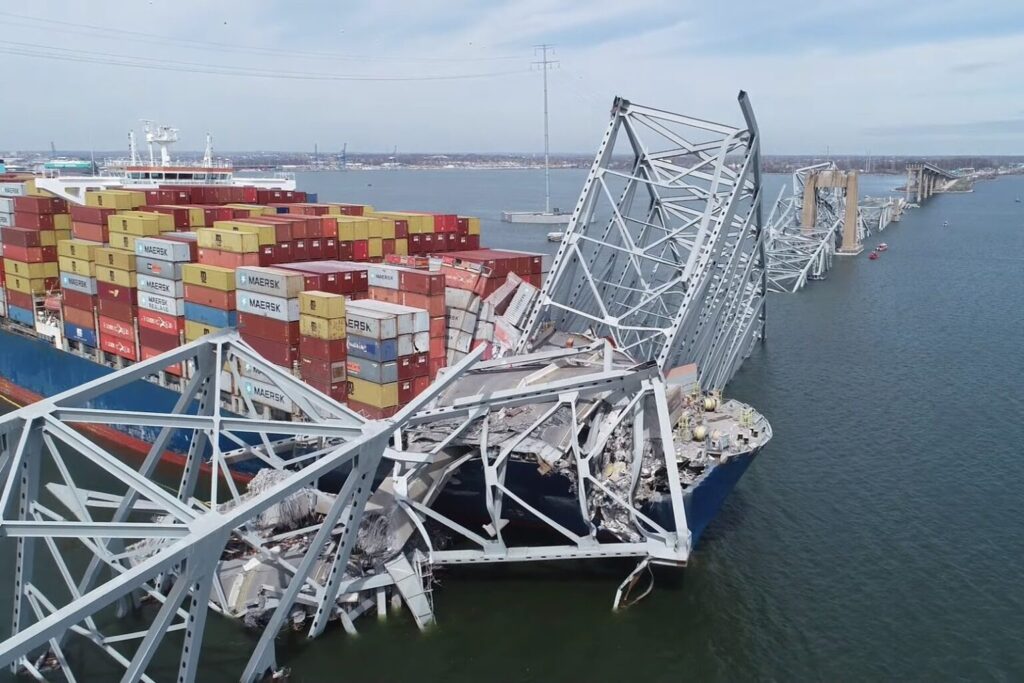
Bridge collapse in Washington captures national attention
Unsurprisingly, the sudden collapse of the 58-year-old Interstate 5 bridge over the Skagit River in Washington state last Thursday night captured the attention of the country and virtually all major national news outlets. Just like in the days after the Minnesapolis I-35W bridge collapse — though mercifully no one died in this incident — reporters scrambled to understand the issue of bridge condition and asked the same question: “how could this happen, and could it happen again somewhere else tomorrow?”
T4 communications director David Goldberg was on site in Washington and did several interviews on television from the bank of the Skagit River to talk about America’s aging bridges and the 66,000-plus that are structurally deficient across the country.
CNN’s Jake Tapper took up the issue head-on with a live interview on The Lead Friday evening (ignore the Arrested Development video thumbnail…):
TAPPER: The American Society of Civil Engineers gave a C-plus to the 600,000 bridges in the U.S.; 11 percent of them are considered structurally deficient. How worried should Americans be when they drive across bridges?
GOLDBERG: Well, the worry is not so much that they will collapse like this with a lot of frequency, but the problem is that the system is aging and it’s aging pretty rapidly. The typical bridge out there was designed to last 50 years and the average age is 44.
And if you look at the bridges that are structurally deficient, the one in 10 bridges that are rated as structurally deficient, something like the typical age of those is 65 years. And that’s going to be — we’re going to have 65-year-old bridges coming every year from now — now on, because we have been building them like mad since the 1950s. And we frankly haven’t been keeping up with them like we should.
TAPPER: And, David, what should the government be doing that in your view they are not doing enough?
GOLDBERG: Well, there’s a couple things that have happened in recent years that Congress in particular needs to pay attention to, because it’s federal money that pays for the big bridges like this across the country.
And they are the ones that stand to hurt us the most if they fall or if we have to close them. And one thing is that we have to recognize the gas tax receipts are going down. We’re getting more fuel- efficient cars and people are driving less, so we have to figure out a way to replace a lot of that money.
And the other thing that has happened in the last year or so is that Congress actually eliminated the fund that was dedicated to bridge repair and sort of said to states, well, you know, you just decide whether they should be fixed or not. But the problem is we have got political pressure to build a lot of the new projects, which competes with that repair money.
So you get situations like this where bridges should have been replaced. They’re not going to be unless we have a dedicated fund.
TAPPER: So, it sounds like you’re saying that the people who make these decisions need to be a little bit more focused on rebuilding and restrengthening things that already exist, as opposed to pursuing new projects?
GOLDBERG: Well, we certainly need to fix things before we build the new stuff that we can’t afford to maintain. So, we have got to get the money together to fix the things and we have got to make it a priority to fix them, because this can’t happen in America.
And NBC Nightly News also led off their Friday evening coverage with the bridge collapse story.
Have you seen another interesting story on the bridge collapse and what it means for transportation policy in your state or nationally? Send it our way via email or in the comments below.
And in case you still haven’t seen it yet, don’t miss our interactive map (and 2011 report) that allows you to search by address and see the status of all bridges around any U.S. address, with inspection data and sufficiency ratings. We’re hoping to update the map and the report in the coming weeks, so stay tuned.



